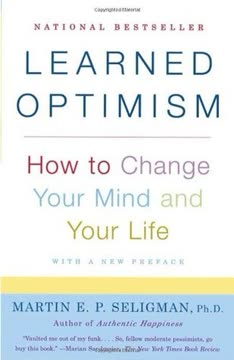Key Takeaways
1. Embrace the Potential Principle: Close the Gap Between Your Current and Potential Self
"No matter how good you've become, you can become better. No matter what you've done so far, you still haven't fulfilled your potential."
The Potential Principle is about continually improving, regardless of your current level of success. It's not about achieving dreams or becoming the best, but about making your best even better. This principle applies to all aspects of life, from career to relationships.
Why improve?
- Customers expect more
- Competitors are always advancing
- Change is constant and accelerating
To embrace this principle:
- Challenge your assumptions about your limits
- Focus on both personal and professional growth
- Commit to lifelong learning and improvement
2. Leverage the Four Quadrants of Improvement: Thinking, Performing, Learning, and Reflecting
"Thinking is the hardest work there is, which is probably why so few people engage in it."
The Potential Matrix consists of four quadrants for improvement:
- Thinking: Vision, planning, and problem-solving
- Performing: Action, execution, and results
- Learning: Acquiring new knowledge and skills
- Reflecting: Introspection and self-awareness
To maximize improvement:
- Balance your efforts across all four quadrants
- Recognize your strengths and weaknesses in each area
- Use each quadrant to leverage benefits from the others
Practical tips:
- Schedule dedicated time for deep thinking
- Practice deliberate performance with focused feedback
- Develop a learning agenda and become an autodidact
- Create space for reflection and introspection
3. Disrupt Yourself Before Others Do: Embrace Change and Innovation
"If you don't disrupt yourself, something or somebody else will."
Self-disruption is about proactively changing and innovating before external forces compel you to do so. It's a key strategy for staying ahead in a rapidly evolving world.
Benefits of self-disruption:
- Opens paths to growth
- Preempts competition
- Develops mental resilience
- Creates unforeseen opportunities
How to disrupt yourself:
- Identify areas needing change in your life or work
- Ask disruptive questions to challenge assumptions
- Learn from mistakes and use them to your advantage
- Explore old ideas for fresh perspectives
Remember: Being brave is essential, as self-disruption can be uncomfortable and risky.
4. (re)Focus: Combat Distraction and Prioritize What Matters
"What preoccupies the mind controls the life."
In an age of perpetual distraction, refocusing is crucial for improvement. It's about directing your attention to what truly matters and eliminating what doesn't.
Steps to (re)focus:
- Challenge your current focus: What should you start, stop, or do differently?
- Stop multitasking: It reduces efficiency and quality of work
- Block uninterrupted time for important tasks
- Make refocusing an ongoing process
Practical strategies:
- Review your priorities regularly
- Eliminate or delegate low-value activities
- Use techniques like the Pomodoro method for focused work sessions
- Practice mindfulness to improve concentration
Remember: (re)Focus is about accomplishment, not just activity. Aim for increased productivity, not just busyness.
5. Engage Others: Build Networks and Learn from the Best
"To become the best, engage the best."
Engaging others is a powerful strategy for improvement. It involves building relationships, learning from experts, and collaborating with like-minded individuals.
Benefits of engagement:
- Deepens relationships
- Creates valuable networks
- Leverages improvement through shared knowledge
- Saves time by learning from others' experiences
How to engage effectively:
- Identify the best in your field and study their methods
- Ask yourself: "How would the best do this?" and "How can I do it even better?"
- Consider forming a mastermind group
- Always reciprocate and pay for free advice
Remember: Engaging others isn't just about extracting value, but also about contributing and building mutually beneficial relationships.
6. Increase Your Capacity: Expand Skills and Layer Confidence
"Time × effort = capacity"
Increasing capacity is about expanding your abilities and confidence to perform at higher levels. It's a crucial aspect of continuous improvement.
Strategies to increase capacity:
- Inventory existing skills and knowledge
- Add complementary skills to enhance strengths
- Track progress or regress to stay motivated
- Practice deliberately and consistently
- Expand experiences to broaden perspective
- Layer confidence through progressive challenges
- Focus on nuances for incremental improvements
Confidence layers:
- Confidence to try
- Confidence to learn
- Confidence to do
- Confidence to master
Remember: Increasing capacity often requires sacrificing time in one area to improve in another. Choose your focus wisely.
7. Determine What Truly Matters: Find Meaning in Your Work and Life
"Man cannot stand a meaningless life."
Identifying what matters is crucial for directing your improvement efforts and finding fulfillment. It's about aligning your actions with your values and purpose.
How to determine what matters:
- Reflect on what's truly significant in your life, relationships, business, and faith
- Identify where you invest most of your time, energy, and resources
- Consider what excites or motivates you
Finding meaning in work:
- Recognize inherent meaning in tasks that directly impact others
- Infuse meaning by focusing on how, why, and for whom you work
- As a leader, help others see the significance of their contributions
Remember: When you can't find an overarching purpose, focus on doing everyday tasks with intention and excellence. Meaning can be found in the details of how you live and work.
Last updated:
Review Summary
The Potential Principle receives mostly positive reviews, with readers praising its actionable insights and unique approach to personal improvement. Many find the book's concepts, particularly the Potential Matrix and four tools for achieving improvement, valuable for maximizing potential. Some reviewers note that while the ideas aren't entirely new, Sanborn's presentation is fresh and motivating. A few critics mention the book's heaviness and formality, but overall, readers appreciate its practical guidance for personal growth and development.
Similar Books









Download PDF
Download EPUB
.epub digital book format is ideal for reading ebooks on phones, tablets, and e-readers.
![THE POTENTIAL PRINCIPLE [Paperback] Sanborn, Mark](https://images.sobrief.com/social/cover_the-potential-principle_360px_1747204183.jpg)





